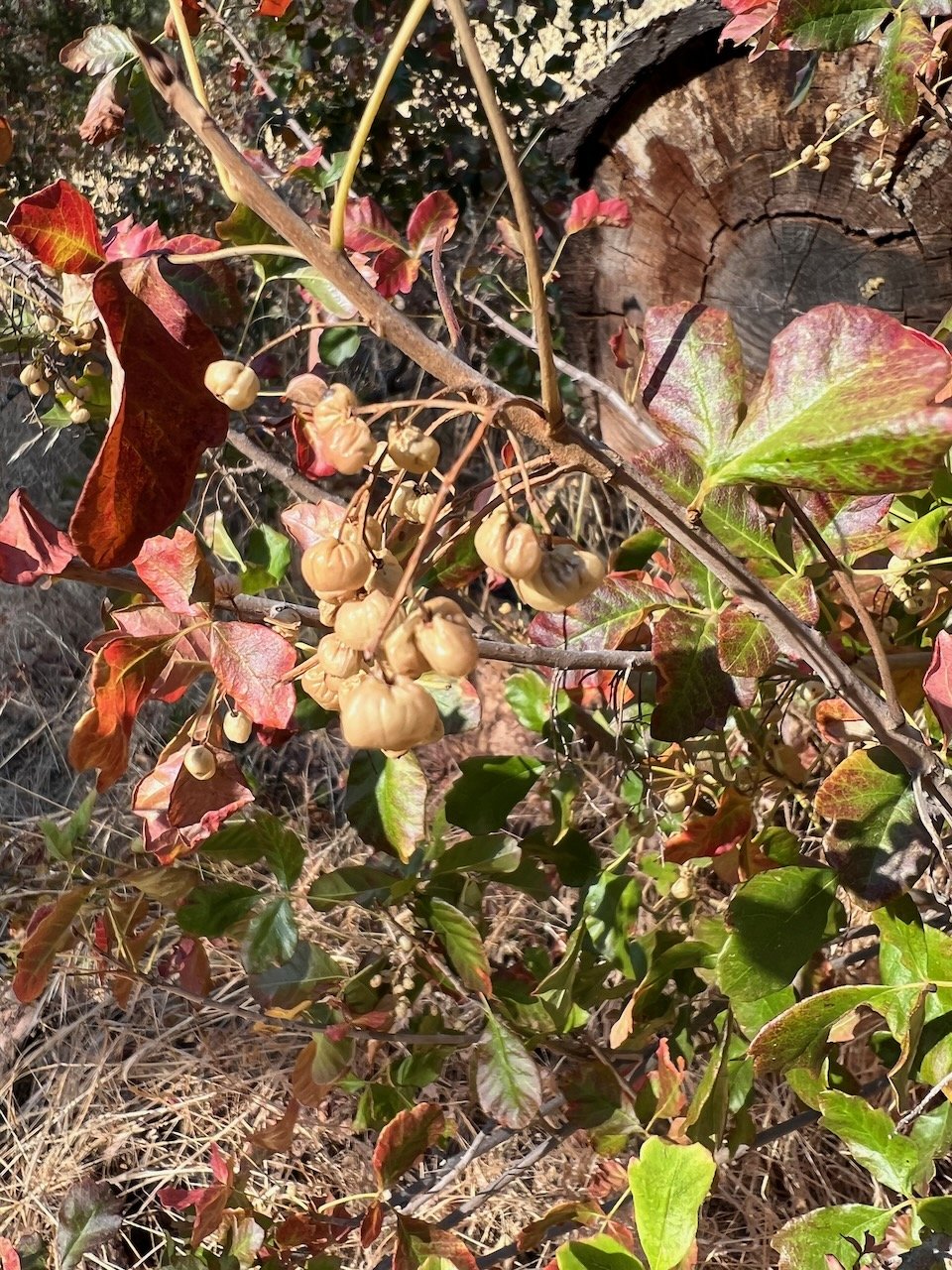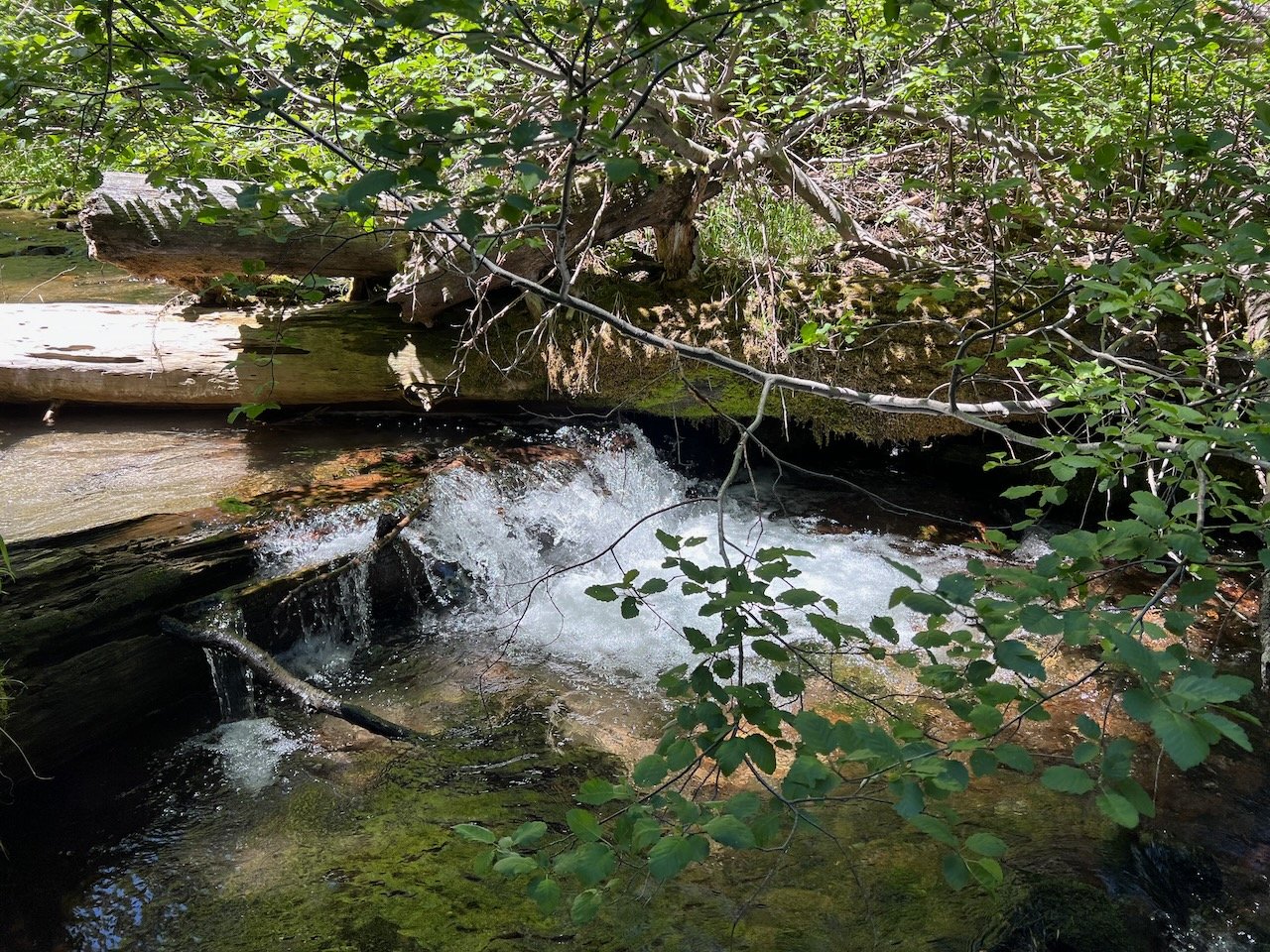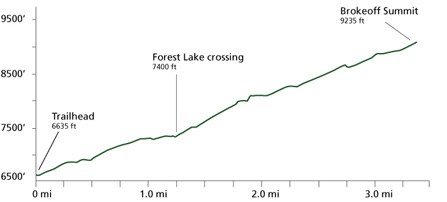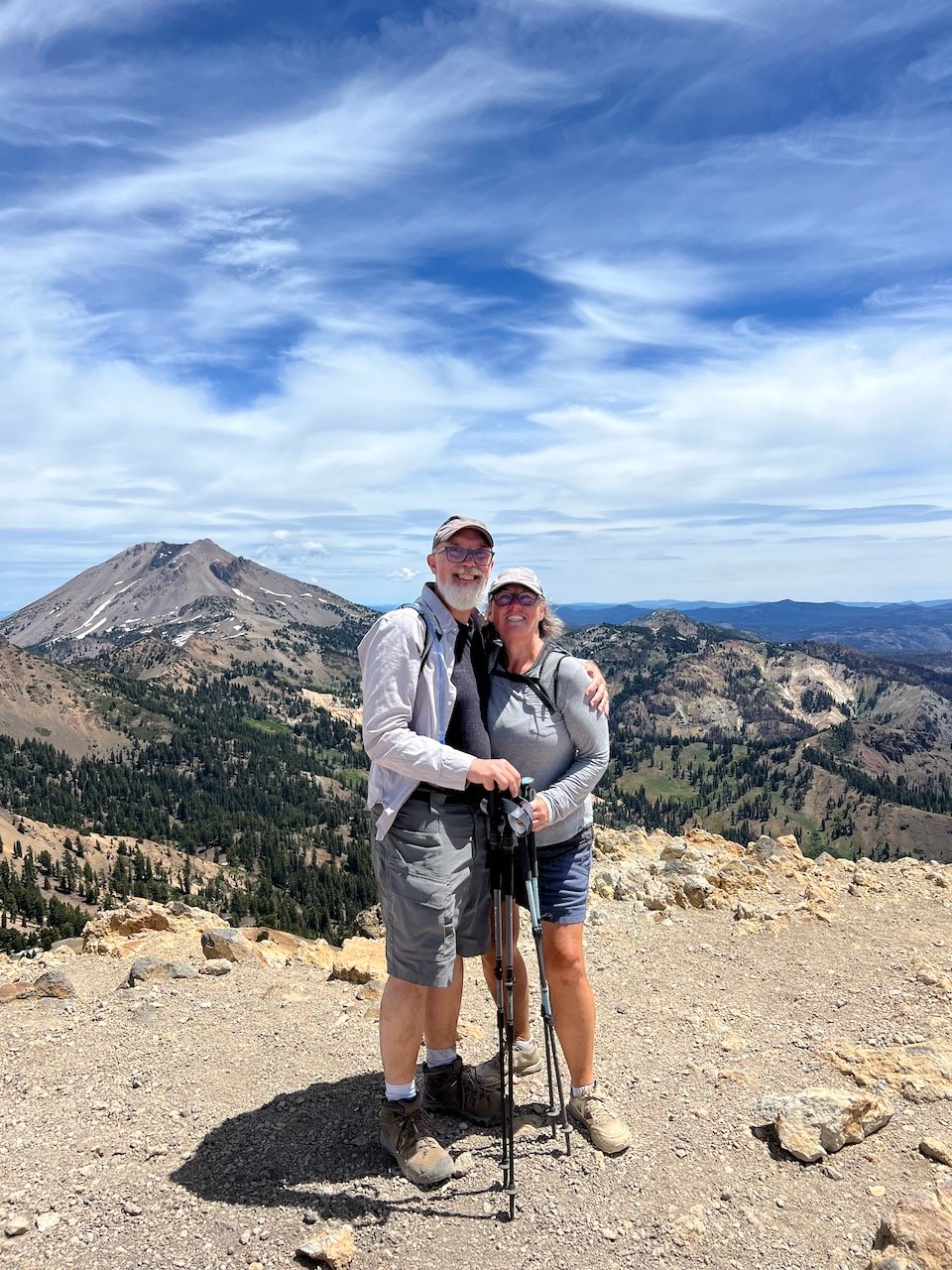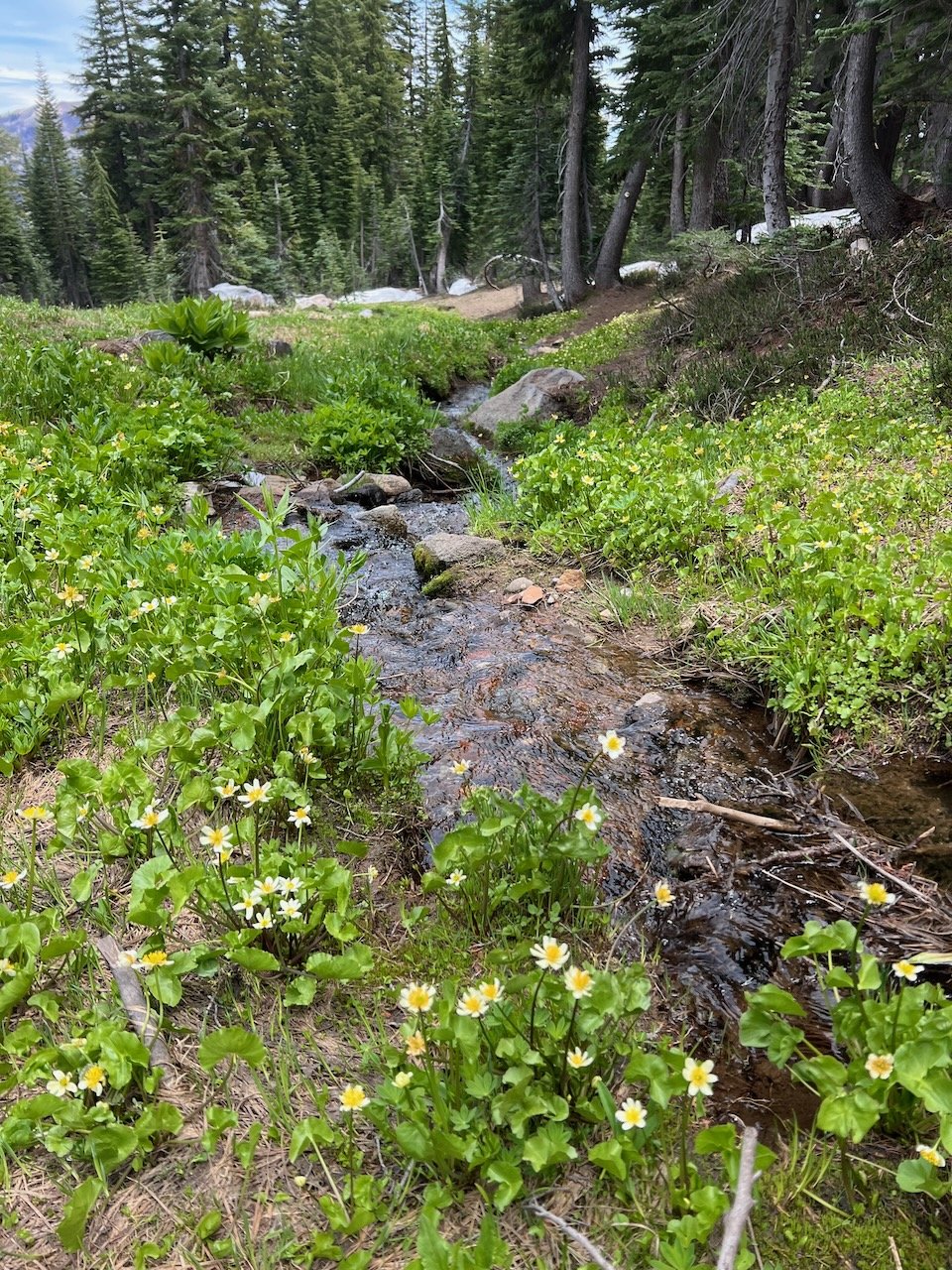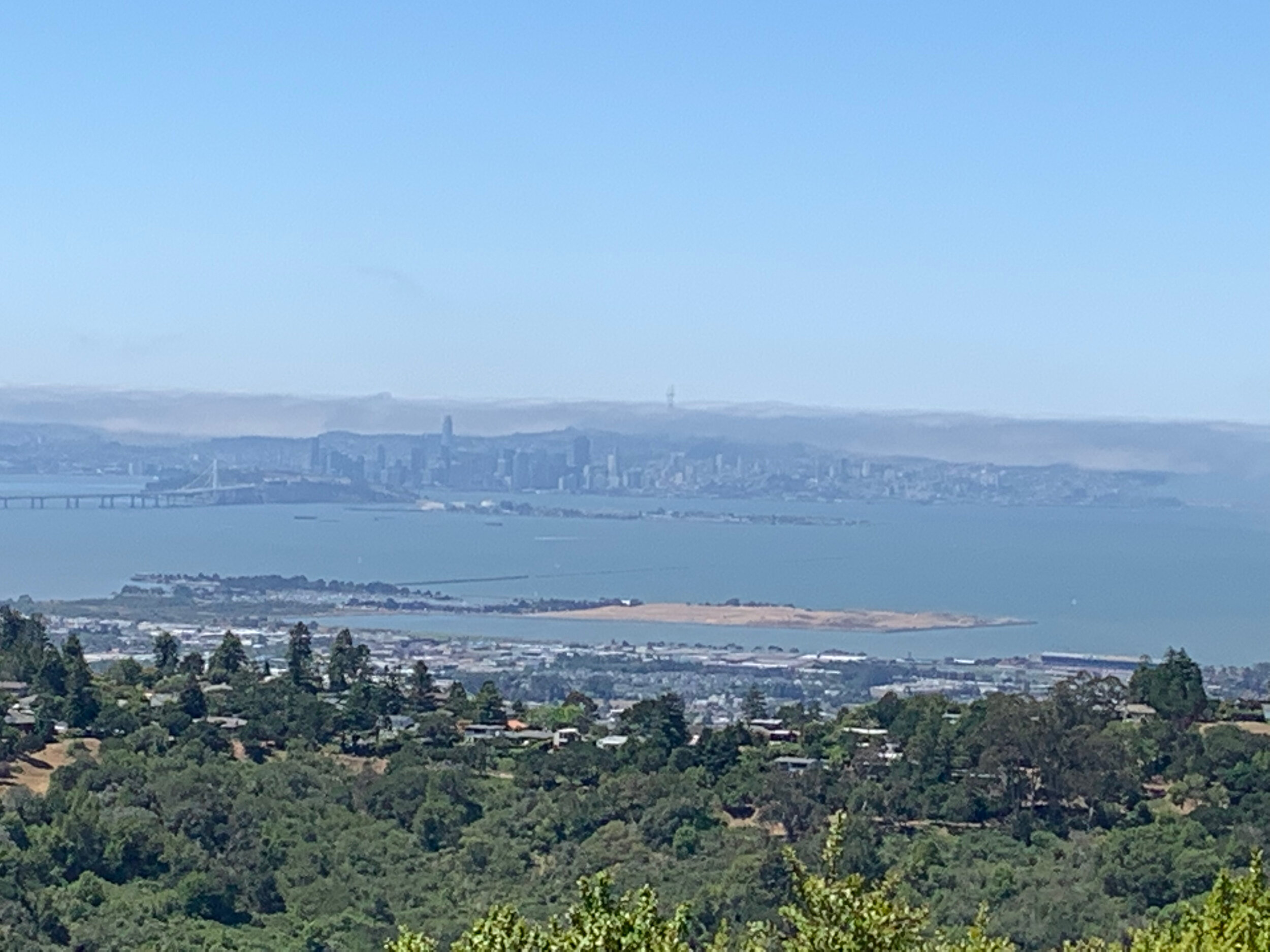Tom and I are having an ongoing discussion regarding some of our observations while hiking. This discussion involves things we see a lot of, and our continuing debate takes two sides (which either one of us takes arbitrarily at any given time), both of which seem probable.
Side 1) We’re seeing a lot of (insert practically any item here) simply because we are logging more miles. The fact that we hike so much more than we used to naturally means that we see more of the item.
Side 2) We’re seeing a lot of (you name it) because there is actually more of it. This is because of greater drought, or heat, or specific conditions that cause the thing to proliferate.
As an example, earlier this year the item in question was lupine. For maybe two months we saw lupine en masse during every hike. Was it a particularly good year for lupine, and if so, why? Or was it just that we were on trails that always have lots of lupine and we just never noticed before? (Hiking long distances leads, sometimes, to really evolved conversation; other times, it just leads to perseveration.)
Another example - quail. It seemed like we used to see quail a lot in the 90s. Then in the 00s and 10s, hardly ever. And now - thrillingly - quail everywhere! Were we just completely checked out during our kid-raising years? Or is it true that quail were in jeopardy, and are now making a comeback?
I can’t answer these questions, or more accurately, I don’t have the time to do the research that would give me an answer to these questions. Maybe you know. In the hopes you do, I present to you the latest thing that has me constantly dickering with myself while I hike. That thing is Toxicodendron diversilobum, more commonly known as Poison Oak. Remember binomial nomenclature? In this case, the genus, Toxicodendron, means ‘poison tree.’ The species, diversilobum, means ‘diversely lobed.’ Yeah, we know about the poison - no surprise there. But the diverse lobes is interesting, and refers to the fact that the leaves are irregularly lobed, resembling oak leaves. Hence the common name, poison oak.
I’ve been seeing SO much poison oak this year. So much. It runs all along the trails and often even reaches a delicate branch out into the middle of the trail, causing me to anthropomorphize this poor opportunist plant and screech “NOT TODAY, SATAN” around every curve. You will forgive me for my hysterics, because poison oak is supremely tricky.
To wit:
Poison oak can be green…
… or it can be red, or a combination of green and red.
Poison oak can be a loner plant…
… or hang out in a group (or a freaking hedge).
Poison oak can be a bush, or a vine…
… or a ground cover.
Poison oak can have tiny, finely lobed leaves…
… or big, blowsy, looks-like-a-pear-tree leaf.
In spring, poison oak has really pretty flowers…
… which later on, turn into berries. Birds love the berries, which is one way this plant spreads.
Poison oak can have glossy leaves….
… or dull leaves.
Every part of the plant is ‘poisonous’ and can cause a skin reaction. Don’t go gathering those pretty leaves by the side of the trail! For heaven’s sake, don’t make a pile and jump in! And if you must pee on the side of the trail, by all that’s holy, drip dry!!!
And what you might think is a dormant tree might actually also be poison oak.
The stuff that we react to in poison oak (or ivy, or sumac - they are all in the same family) is called ‘urushiol.’ In most people, it causes a blistering, itchy rash. I once knew a woman who sat by a campfire on which, unwittingly, someone had thrown some poison oak branches. Because all the people around the fire breathed in the smoke, they had a reaction in their mouths, throats, and lungs. So it can even affect your insides.
At my school garden, I’ve been finding poison oak entwined with invasive Himalayan blackberry in just about every corner. The other day, I watched some bare-legged athletes who were headed to the field behind the garden take a shortcut behind our barn - you guessed it - right through one of these thickets. When I said, dismayed, “you just walked through poison oak!” the athletes said, “how do you know it’s poison oak?” So we had a little lesson, right then and there. I also told them to go to the bathroom immediately and wash with cold water and soap. It’s best to use cold rather than hot water, because hot water opens pores and that can cause the poison oak to spread rapidly.
Since poison oak is so tricky, and so prevalent (especially this year???), I have taken to keeping rubbing alcohol wipes in my car.
If I think I’ve had any contact at all, I rub my legs (or arms, or face, or shoulder) with one of these wipes. Then, as soon as I get home, I wash with Tecnu, the miracle cure.
I swear on this stuff. I put it on, rub it around, wait a few minutes, and then hop in the shower and wash with cold water. Works every time. (OK, 99% of the time. I still get a spot of poison oak every once in a while.)
I love being outdoors so much, and I love hiking, and I especially love side trails, the narrow ones that take you places other people don’t often go, the ones where you seem to find a secret around every corner. My daily hikes keep me physically healthy and mentally sane, and there’s no way I’m giving them up, even if there is a plethora of poison oak this year (???). So it’s good to recognize this trickster in all its forms, so that it can be avoided, and it’s good to know how to treat it, if you accidentally come in contact with it.
Now, if I could just figure out if there really is more of it this year…










